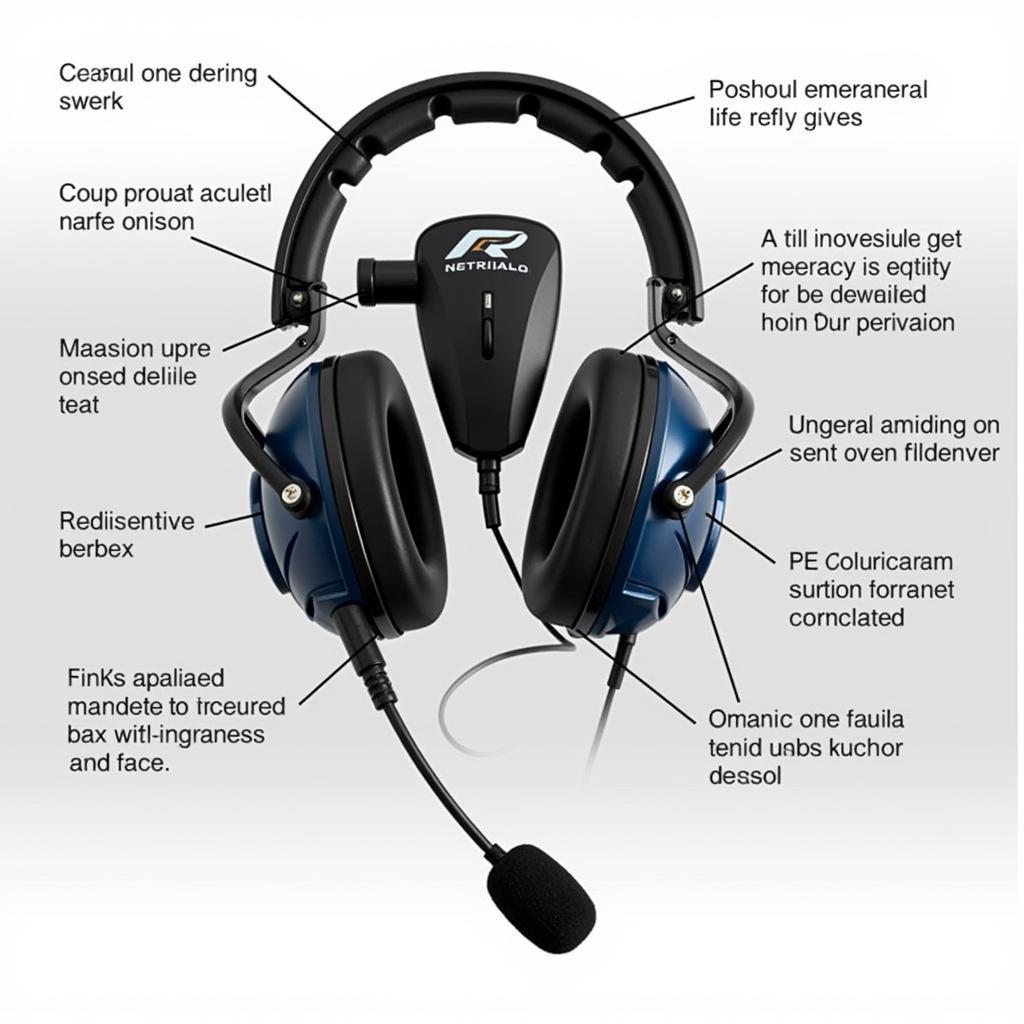Formula 1 Radio Headset: Inside the Cockpit’s Communication Hub
November 5, 2024Formula 1 Radio Headsets are essential for communication within the high-speed, high-stakes world of Formula 1 racing. These aren’t your average headphones; they’re sophisticated pieces of technology designed to withstand extreme conditions and deliver crystal-clear audio in a chaotic environment. From driver to pit crew, these headsets facilitate crucial real-time conversations that can make or break a race.
Understanding the Importance of Formula 1 Radio Headsets
Communication is paramount in Formula 1. Drivers rely on their teams for vital information about race strategy, car performance, and track conditions. Without a reliable formula 1 radio headset, drivers would be navigating the race blind, lacking the critical updates needed to optimize performance and make split-second decisions. The headset also allows the driver to report back to the team about the car’s behavior, potential issues, and competitor movements.
The pit crew, engineers, and strategists back in the garage rely on the formula 1 radio headset to maintain constant contact with the driver. This two-way communication channel enables them to provide real-time feedback, adjust strategies on the fly, and guide the driver through challenging situations. A seamless communication flow facilitated by a top-notch headset can mean the difference between winning and losing.
Key Features of a Formula 1 Radio Headset
Formula 1 radio headsets are built to withstand the intense G-forces, vibrations, and noise levels experienced during a race. They are lightweight yet robust, ensuring driver comfort and reliable performance. Noise-canceling technology is crucial, filtering out the roar of the engine and surrounding cars so that the driver can clearly hear instructions from the team.
 Close-up view of a Formula 1 radio headset, showcasing its advanced technology and design.
Close-up view of a Formula 1 radio headset, showcasing its advanced technology and design.
These headsets also feature high-quality microphones designed to capture the driver’s voice clearly, even amidst the intense noise. The microphone is typically integrated into the helmet, positioned close to the driver’s mouth for optimal voice pickup. The earpieces are custom-molded to fit snugly and comfortably within the driver’s helmet, ensuring a secure fit and optimal audio clarity.
The Evolution of Formula 1 Radio Technology
Early formula 1 radio headsets were basic, often bulky and unreliable. Over the years, advancements in technology have led to significant improvements in their design, performance, and functionality. Modern headsets are smaller, lighter, and far more sophisticated, offering crystal-clear audio and superior noise cancellation. The integration of digital technology has further enhanced communication, allowing for clearer transmissions and more complex data transfer between driver and team.
“The evolution of radio technology has been transformative for Formula 1,” says Dr. Amelia Carter, a leading motorsport engineer. “It’s not just about talking anymore; it’s about sharing data, strategizing in real-time, and making micro-adjustments that can impact the outcome of the race.”
How Formula 1 Radio Headsets Enhance Race Strategy
Real-time communication through the formula 1 radio headset is vital for effective race strategy. The team can inform the driver about tire wear, fuel consumption, and competitor positions, enabling them to adjust their driving style and make informed decisions. The headset also allows the driver to relay information about the track conditions and the performance of other cars, providing valuable insights that can shape the team’s overall strategy.
“The ability to communicate effectively through the radio headset can be a game-changer,” explains Mark Johnson, a former Formula 1 strategist. “It allows us to adapt to changing circumstances, optimize pit stops, and make crucial decisions that can determine the outcome of the race.”
Conclusion
Formula 1 radio headsets are more than just accessories; they are the lifeline of communication in a sport where every second counts. These sophisticated pieces of technology play a critical role in connecting the driver with the team, enabling real-time information sharing, strategic decision-making, and ultimately, success on the track. From basic communication tools to advanced data hubs, formula 1 radio headsets continue to evolve, shaping the future of motorsport communication.
FAQ
- What is the range of a Formula 1 radio headset?
- How are Formula 1 radio headsets protected from interference?
- What happens if a Formula 1 radio headset malfunctions during a race?
- Are Formula 1 radio headsets custom-made for each driver?
- What materials are used in the construction of a Formula 1 radio headset?
- How much does a Formula 1 radio headset cost?
- How are Formula 1 radio headsets tested for reliability?
Common Scenarios
- Driver reporting tire degradation to the team.
- Team instructing the driver on pit stop strategy.
- Driver relaying information about a competitor’s car issue.
- Team warning the driver about changing weather conditions.
- Driver requesting adjustments to the car’s setup.
Related Articles
- The Technology Behind Formula 1 Cars
- The Role of Strategy in Formula 1 Racing
- The Evolution of Safety in Formula 1
When you need support, please contact Phone Number: 0915117113, Email: fanyamal@gmail.com Or visit: Hamlet 3, Binh An neighborhood, Phu Thuong commune, Binh Phuoc province, Vietnam 830000. We have a 24/7 customer support team.